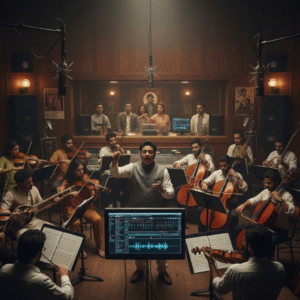Are Movie Albums Losing Relevance in Indian Music?
Mumbai – 2025
For nearly a century, Indian film music has dominated the country’s soundscape. From Lata Mangeshkar to Arijit Singh, playback singers have been the voice of the nation’s emotions—one film album at a time.
But in recent years, a major shift has been brewing. The rise ofindependent music singles, driven by streaming platforms and short-form content apps, is rapidlychallenging the dominance of traditional film albums.
What was once a deeply symbiotic relationship between cinema and music is now being restructured—and the rules are being rewritten.
The Rise of the Standalone Single
Between 2020 and 2024, the number of non-film Hindi music tracks released annually nearlydoubled, according to data from the Indian Music Industry (IMI). Independent labels, influencers, and even film composers have started releasing tracks that arenot tied to any film—and are often more successful on streaming charts.
Artists likePrateek Kuhad,Darshan Raval,Jasleen Royal,King,OAFF, andAnuv Jainhave found massive success through singles—racking up millions of streams without any cinematic backing.
Even Bollywood-established voices such asArmaan Malik,Shreya Ghoshal, andBadshahnow release independent music regularly—some even prioritizing singles over playback offers.
Film Albums: Once Core, Now Optional
Once a crucial part of a film’s identity, music albums today are oftencompressed to one or two viral tracks, with the rest fading into irrelevance. Some reasons behind this shift:
- Streaming behavior favors individual hits over album-based listening
- Shorter attention spans make multi-track albums harder to sustain
- Reel culture demands catchy, standalone audio clips
- Cinematic narratives increasingly prioritize realism over lyrical interludes
Albums from films likeGehraiyaan,Animal, orRocky Aur Ranimay have generated buzz, but their success is oftendefined by one lead single, not the album as a whole.
Changing Roles for Playback Singers
Traditionally, playback singers were tied to actors. Their voices were the hidden layer of a star’s on-screen persona.
Today, with the rise of singles and music videos featuring the singers themselves, theface-voice relationship has shifted. The singer is now the star.
This is particularly evident in the careers of artists likeNeha Kakkar,B Praak, andDiljit Dosanjh, whose identity now extends far beyond playback performances.
The Streaming Economy Is the New Studio System
Platforms like Spotify, YouTube Music, Apple Music, and JioSaavn havedemocratized music distribution, allowing singers and composers to bypass film studios altogether.
The result?
- Music is consumed by mood, not movie
- Algorithms, not albums, define success
- The “film-first” pipeline is no longer the default
What This Means for Bollywood
This isn’t the end of film music—but it is a moment of reckoning.
To stay relevant, Hindi film albums must adapt to new trends:
- Incorporating genre experimentation
- Releasing songs as narrative extensions—not just promotional tools
- Collaborating with indie voices rather than recycling formulas
A New Musical Era
For Indian music, this shift is both disruptive and liberating.
It opens the door fornon-cinematic stories,regional expressions, anddirect artist-audience relationships.
In this evolving landscape, playback is no longer the only path.
Because sometimes,the most powerful songs today don’t need a movie to make them matter.











